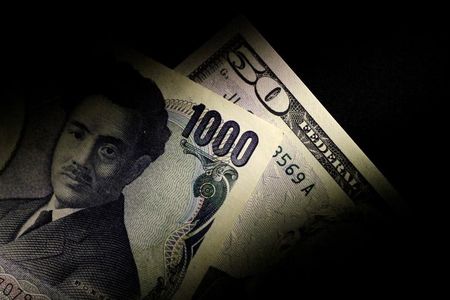Forex
Asia FX at risk as dollar firms into US elections- JPM

Investing.com– Asian currencies are at risk of further weakness amid recent strength in the dollar, especially if the upcoming U.S. elections result in a Republican sweep, JPMorgan analysts wrote in a recent note.
JPM analysts noted that the dollar had firmed in recent sessions amid growing speculation over a Donald Trump victory over Kamala Harris in the upcoming election, with such a scenario presenting headwinds for Asian markets.
Trade-reliant currencies were likely to face weakness, given that Trump’s agenda includes increased tariffs on several U.S. trading partners, mainly China. JPM said that the Indian rupee could provide some haven from this trend, on expectations of strength in the country’s current account in the coming months.
The Chinese yuan remains vulnerable to a “Trump repricing,” JPM said, given that Trump has outlined steep import tariffs on the country as part of his agenda.
While Chinese markets benefited from optimism over more local stimulus in recent months, a Trump victory could sharply undermine this trade.
“We see risks of topping 7.30 again on a potential Trump win, but dipping to sub-7 levels on a Harris victory,” JPM said.
The dollar shot up to three-month highs in recent weeks amid increasing speculation over a Trump victory, which is expected to result in more inflationary policies over the coming months.
The greenback was also buoyed by a swathe of stronger-than-expected U.S. economic readings, which spurred bets that the Federal Reserve will cut interest rates at a slower pace in the coming months.
This trend battered Asian currency markets, with majors such as the Japanese yen weakening sharply.
Among emerging markets in Asia, JPM said China, South Korea and the ASEAN complex, excluding the Philippines, were historically the weakest in times of dollar strength.
The brokerage said India, the Philippines and Taiwan were likely to outperform.
Equity sectors with exposure to U.S. revenue streams were also set to benefit from a stronger dollar

 Forex3 years ago
Forex3 years agoForex Today: the dollar is gaining strength amid gloomy sentiment at the start of the Fed’s week

 Forex3 years ago
Forex3 years agoUnbiased review of Pocket Option broker

 Forex3 years ago
Forex3 years agoDollar to pound sterling exchange rate today: Pound plummeted to its lowest since 1985

 Forex3 years ago
Forex3 years agoHow is the Australian dollar doing today?

 Cryptocurrency3 years ago
Cryptocurrency3 years agoWhat happened in the crypto market – current events today

 World3 years ago
World3 years agoWhy are modern video games an art form?

 Commodities3 years ago
Commodities3 years agoCopper continues to fall in price on expectations of lower demand in China

 Economy3 years ago
Economy3 years agoCrude oil tankers double in price due to EU anti-Russian sanctions



























